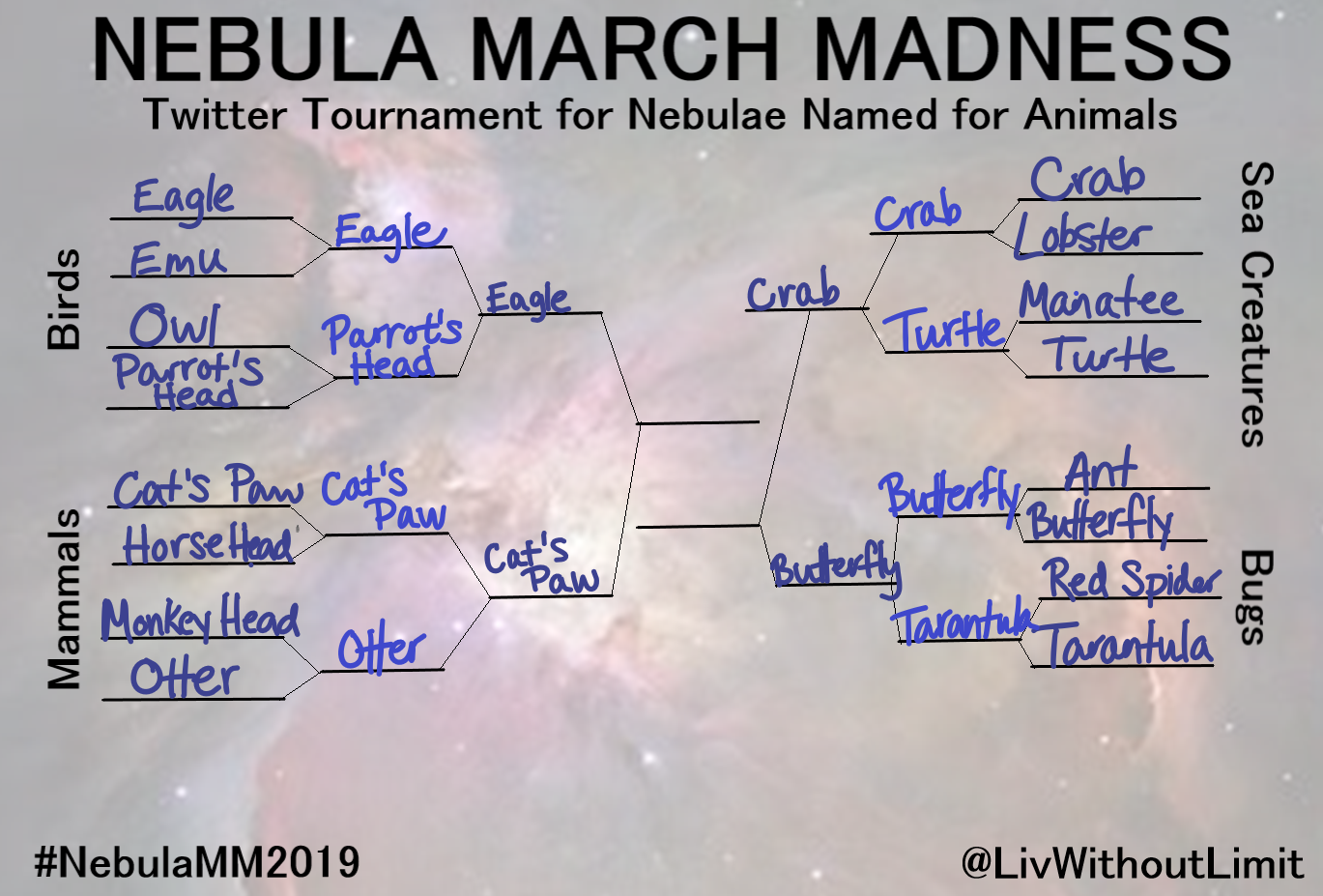Nebula March Madness 2019 - Round 4 (FINAL!)
Olivia Wilkins
We started with 16 nebulae, and now we’re down to just two: the Eagle Nebula and the Butterfly Nebula. In the final round of Nebula March Madness, these two nebulae named for flying critters go head-to-head while those named for mammals and sea creatures watch from the sidelines. Who will win, the birds or the bugs? Vote on Twitter and decide which nebulae is the most stellar (ha.) of them all!
What is a nebula?
A nebula is a cloud of gas and dust in outer space. Nebulae vary in size and composition and can have atomic, ionized, or even molecular gas. Some nebulae consist of molecular clouds which are sometimes affectionately called stellar nurseries (if they contain star-forming regions, that is!).
Nebulae are often named for what observers think they look like, and I've selected 16 nebulae that have been named for animals. I've divided these up into those named for birds, mammals, sea creatures, and bugs, and each week we will eliminate a handful of nebulae and learn a bit more about the rest.
ROUND 4: Recap
In this tournament, I've shared stats about physical characteristics, the composition, and the discovery of various nebulae. In the final round, we'll look at these attributes for the final two contenders side-by-side.
BIRDS vs. BUGS: Eagle Nebula vs. Butterfly Nebula
Eagle Nebula (Image: ESO)
Right ascension: 18h19m
Declination: -13°49’
Distance: 7,000 lightyears
Radius: ~70 x 55 lightyears
Constellation: Serpens
Distance: 7,000 lightyears
Radius: ~65 lightyears
Type: HII (H+) region
Features: Pillars of Creation
Year discovered: 1745-1746
Discovered by: Jean-Philippe Loys de Chéseaux (Swiss astronomer)
Reported in: list presented to French Academy of Sciences
Butterfly Nebula (Image: NASA/ESA)
Right ascension: 17h14m
Declination: -37°06’
Distance: 3,400 lightyears
Radius: >1.5 lightyears
Constellation: Scorpius
Distance: 3,400 lightyears
Radius: >1.5 lightyears
Type: Bipolar planetary nebula
Features: Carbonates, crystalline water ice, quartz
Year discovered: before 1888
First studied by: Edward Emerson Barnard (American astronomer)
Reported in: New General Catalogue of Nebulae and Clusters of Stars (NGC)
If numbers aren’t your thing, here’s a more qualitative breakdown of our two contenders:
Eagle Nebula
Further away
Bigger across
Site of active star formation
Really cool physical features
Discovered earlier
Butterfly Nebula
Closer
Smaller across
Site of aging star
Really cool chemistry
Discovered later
Which nebulae are your picks? Share in the comments, and don't forget to follow along on Twitter!
All information sourced from Wikipedia.

